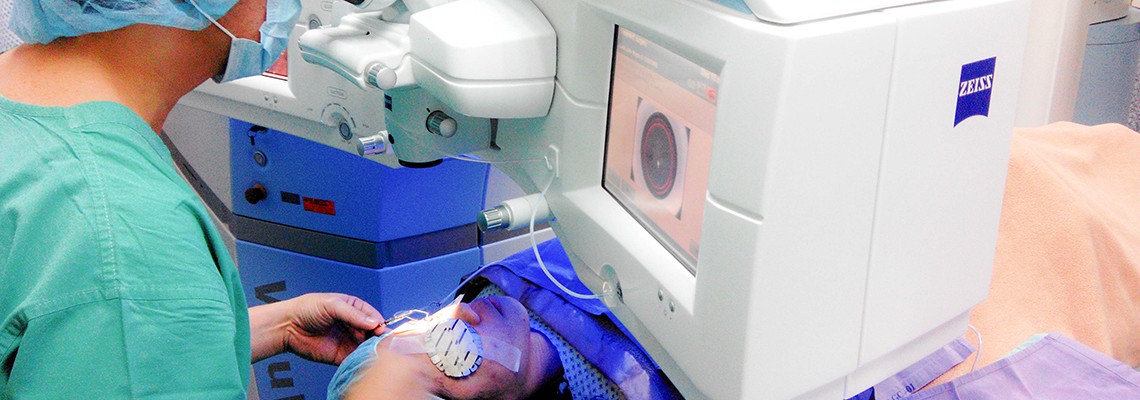
Vision Laser Service
The Vision Laser Service is a total refractive surgery center capable of treating a wide range of refractive errors: myopia (nearsightedness), hyperopia (farsightedness), astigmatism and presbyopia. Staffed by highly trained experts and leaders in LVC and intraocular surgery, our refractive surgery team are all board-certified refractive surgeons who underwent formal cornea and refractive surgery fellowship training in the best eye centers and universities in the United States, Canada, and Europe. With more than 15 years of experience, we have performed thousands of laser refractive surgeries with outstanding outcomes at par with the best refractive surgery centers in the world. Our dedicated team of doctors, optometrists, nurses, and technicians are ready to attend to all your visual concerns.
Am I eligible for a laser refractive surgery?
-
At least 18 years of age
-
Nearsightedness (myopia) up to 12 Diopters (Grade of up to 1200)
-
Farsightedness (hyperopia) up to 6 Diopters (Grade up to 600)
-
Astigmatism up to 6 Diopters (Grade up to 600)
-
No significant change in grade of eyeglasses or contact lenses for the past 12 months
-
Not pregnant
Screening Examination
To ensure optimal outcome, a screening examination is required prior to undergoing laser refractive surgery. Using advanced diagnostic exams and imaging, we will provide you with most comprehensive eye examination. After the screening, our refractive specialist will discuss with you the different types of laser surgery and specify the laser procedure that is ideal for you.
For contact lens wearers:
- Refrain from soft contact lens wear at least 3 days prior to your exam
- Refrain from Rigid gas permeable contact lens wear at least 2 weeks prior to your exam
I want to see clearly without glasses or contact lenses. What is laser refractive surgery?
- Laser refractive surgery is the use of laser to correct nearsightedness, farsightedness and astigmatism by reshaping the cornea (clear covering of the eye). This procedure eliminates or reduces the need for glasses or contact lenses to have clear vision.
- By means of a laser, the surface of the eye is sculpted/re-shaped so that light rays can directly focus on the retina. All procedures are quick and painless and offer an excellent solution from dependency on glasses or contact lens wear
- What are the different options to correct vision?
SMILE (Small Incision Lenticule Extension)
- St. Luke's Medical Center - Vision Laser Center is equipped with the first FDA approved Femtosecond Laser for SMILE.
- SMILE is the latest and most advanced type of laser refractive surgery that can only be done using the first FDA- approved Zeiss-Visumax femtosecond laser available in our center. The laser creates a lenticule to correct the refractive error of the eye.Thislenticule is then extracted thru a small incision, rendering it flapless. The outer corneal layer remains largely intact, contributing to the eye's stability and to fast visual recovery. With an incision 1/4, the size of the LASIK incision, SMILE is the most gentle and results in the most comfortable recovery after the laser procedure
- This is a flapless and painless procedure and studies have shown that there is less dry eye and less chance of weakening of the cornea. There is also greater stability in myopia of more than 6 diopters.
Femtosecond Bladeless Lasik
- LASIK is the most popular and famous among the different options we offer to correct vision and has been performed on millions of satisfied people worldwide. Through BLADELESS LASIK, there is nothing sharp that will come into contact with the eye, no automated microkeratomes or blades.
Surface Ablation (PRK or Photorefractive Keratectomy)
- In Surface Ablation, the outer layer of the cornea is gently removed and laser is applied to the exposed surface. This procedure maybe indicated in eyes with thin corneas.
Phakic Lens Implantation
- We offer this option to eyes which may not qualify for Laser Refractive Surgery (LASIK, SMILE or PRK) due to very high grade; nearsightedness (grade of more than 1200) or farsightedness (grade of more than 600).In this procedure, a special lens is placed inside the eye to correct refractive error.

